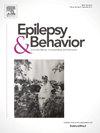Behavioral analyses in rodent models of tuberous sclerosis complex
IF 2.3
3区 医学
Q2 BEHAVIORAL SCIENCES
引用次数: 0
Abstract
Tuberous sclerosis complex (TSC) is typically associated with epilepsy, but patients also present with a myriad of comorbid neuropsychiatric disorders. TSC is caused by mutations in the tuberous sclerosis complex genes 1 or 2 (TSC1, TSC2). This TSC1/2 complex serves as a negative regulator of the mammalian target of rapamycin (mTOR) signaling pathway, which plays a crucial role in regulating neuronal function, including cell proliferation, survival, growth, and protein synthesis. Mutations result in hyperactivation of the pathway. Animal models with mutations in Tsc1 or Tsc2 consistently exhibit epilepsy and behavioral phenotypes. Additionally, abnormal neuronal populations can impact the broader network, leading to deficits in learning and memory, anxiety-like behaviors, deficits in social behaviors, and perseverative and repetitive behaviors. This review aims to synthesize the existing animal literature linking TSC models to epileptogenesis and behavioral impairments, with insights on how modifications in TSC signaling influence both the structure and function of neurons and behavior. Understanding these relationships may provide valuable insights into potential therapeutic targets for managing epilepsy and neuropsychiatric disorders associated with TSC dysregulation.
求助全文
约1分钟内获得全文
求助全文
来源期刊

Epilepsy & Behavior
医学-行为科学
CiteScore
5.40
自引率
15.40%
发文量
385
审稿时长
43 days
期刊介绍:
Epilepsy & Behavior is the fastest-growing international journal uniquely devoted to the rapid dissemination of the most current information available on the behavioral aspects of seizures and epilepsy.
Epilepsy & Behavior presents original peer-reviewed articles based on laboratory and clinical research. Topics are drawn from a variety of fields, including clinical neurology, neurosurgery, neuropsychiatry, neuropsychology, neurophysiology, neuropharmacology, and neuroimaging.
From September 2012 Epilepsy & Behavior stopped accepting Case Reports for publication in the journal. From this date authors who submit to Epilepsy & Behavior will be offered a transfer or asked to resubmit their Case Reports to its new sister journal, Epilepsy & Behavior Case Reports.
 求助内容:
求助内容: 应助结果提醒方式:
应助结果提醒方式:


